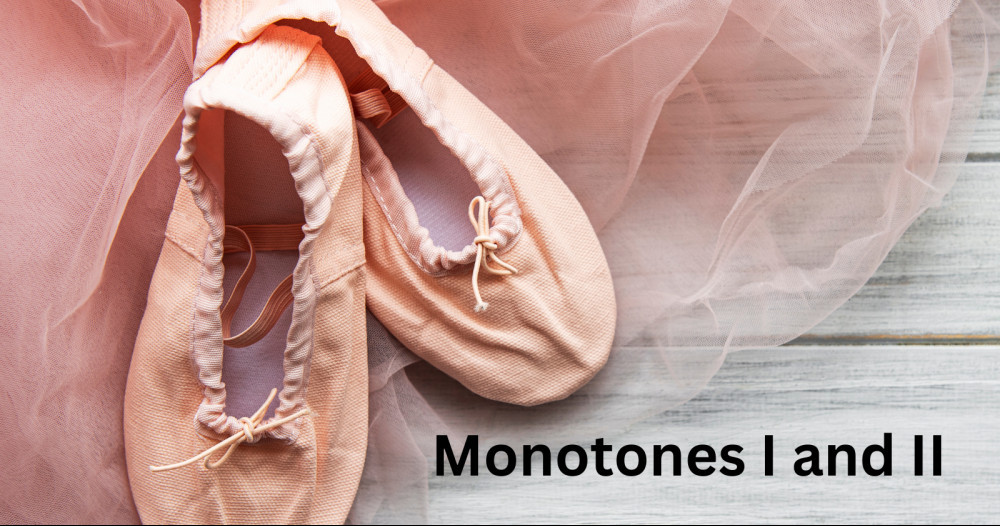Well there were actually two Monotones Ballets.
Monotones Ballet I was a ballet done in one act. It was choreographed by Frederick Ashton and the music was Satie Trois Gnossiennes by Lanchbery.
It was first performed by the Royal Ballet at Covent Garden on the 25th of April 1966.
The dancers were Antoinette Sibley, Geogina Parkinson and Brian Shaw.
Monotones Ballet II was also a ballet done in one act. It was choreographed by Frederick Ashton and the music was Satie Trois Gnossiennes by Debussy and Roland-Manuel. The lighting was don by William Bundy.
It was first performed by the Royal Ballet at Convent Garden on the 24th of March 1965.
The dancers were Vyuyan Lorrayne, Anthony Dowell and Robert Mead.

Monotones II was first given as a piece d’occasion at the Royal Ballet Benevolent Fund Gala in March 1965.
Despite the competition offered by the Royal Ballet’s staging of the Polovisian Dances from Prince Igor, and the pas de six from Laurencia with a stellar cast, Monotones, which was plain with just three dancers in white leotards, and no decor other than sensitive lighting and just ten minutes of choreography, made the greatest and most lasting impression.
Since Ashton is intensely musical, the key to the work lay in the pure, uncluttered lines of Satie’s music, which was music stripped down to its essentials, marvellously calm, and beautiful.
Here is a snippet of Monotones II performed by the Royal Ballet more recently.
‘The dancers looked like three athletes involved in some celestial game, Henry Vaughan’s ‘angels in some brighter dream’ moving calmly, deliberately, unemotionally through their rites, borne along on the clean, spacious sonorities of the music, sharing its qualities of peace and measured beauty. The trio cluster together, separate into solos and duets, rejoin again, always with an unhurried grace, forming sulptural poses of great plastic beauty.’
Ashton exploited his dancer’s qualities of line with movement followed through to its conclusion with superb logic, as if stating and proving some choreographic theorem with tranquil assurance.
Monotones I which followed a year later reversed the casting of No. II by offering two women and one man, and the stronger pulse of the Gnossiennes inspired Ashton to create movement that seems more sharply accented than in the earlier trio.
There is the same insistence on beauty of line and control of extension, and the same essentially classi c nobility, but the dancers are treated as separate entities in a pattern rather than as links in a chain of dynamics.
c nobility, but the dancers are treated as separate entities in a pattern rather than as links in a chain of dynamics.
There is a facinating counterpoint of dancing with shapes echoed and repeated, lines of movement interweaving and answering each other.
The effect, as in the earlier trio is of timeless beauty.
For more on Frederick Ashton, click here.

